Nara is a fantastic city to learn about Japanese history because there are many culturally important temples and shrines. But it’s also famous for something totally unexpected – Nara is home to almost 1,500 freely roaming wild sika deer.
And these deer find themselves firmly on almost every first timers Japan itinerary. Why? Because they interact with humans. Putting things into perspective, the average deer is afraid of humans, and we’ve all seen them run away as fast as possible from us, right? But this isn’t what happens with the sika deer of Nara.
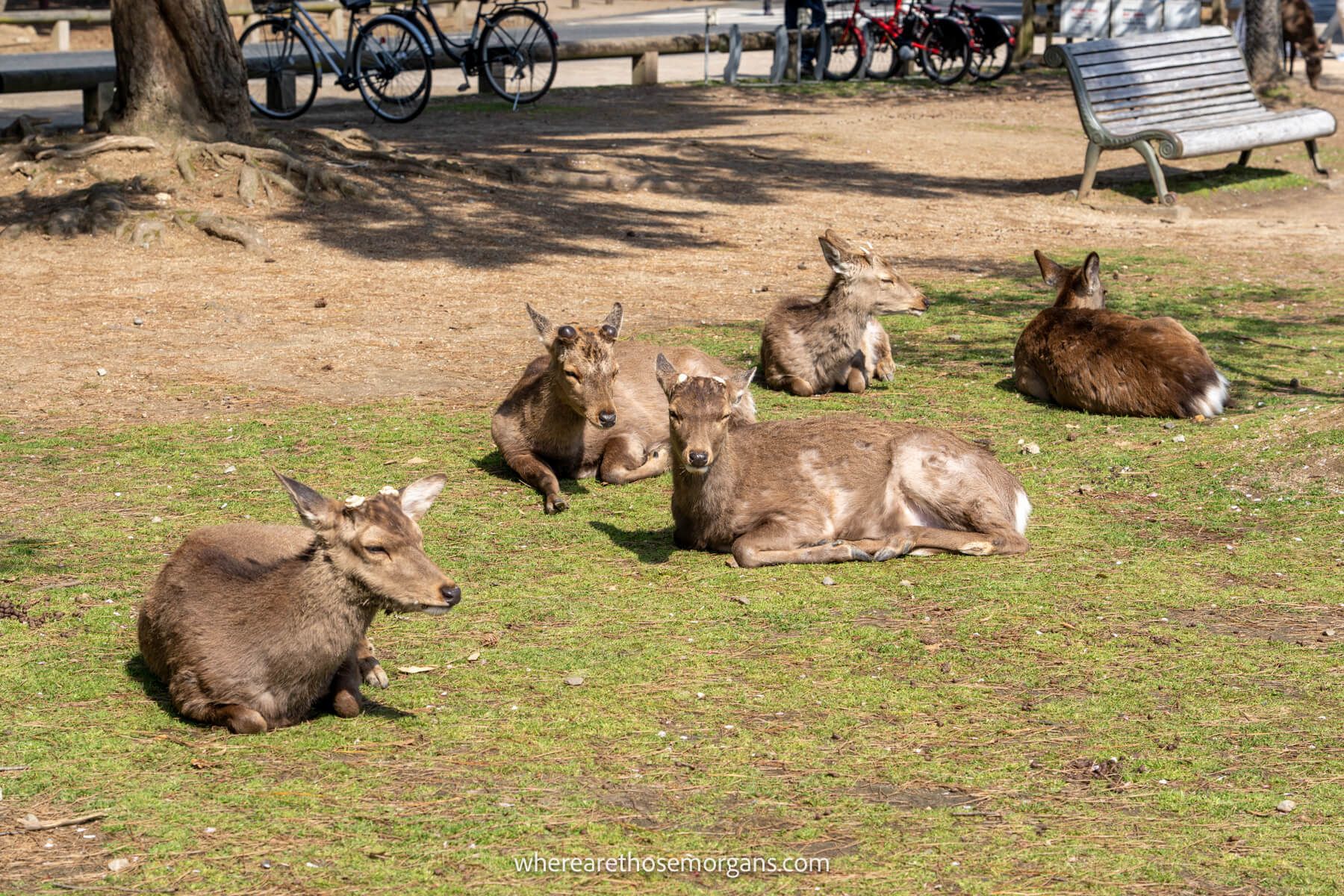
Local folklore suggests that the sika deer became sacred after a visit from the first of the four gods from the Kasugataisha Shrine. Therefore, these sacred animals in Nara are considered messengers of the Gods. The deer here will approach humans and they wander the city at their will.
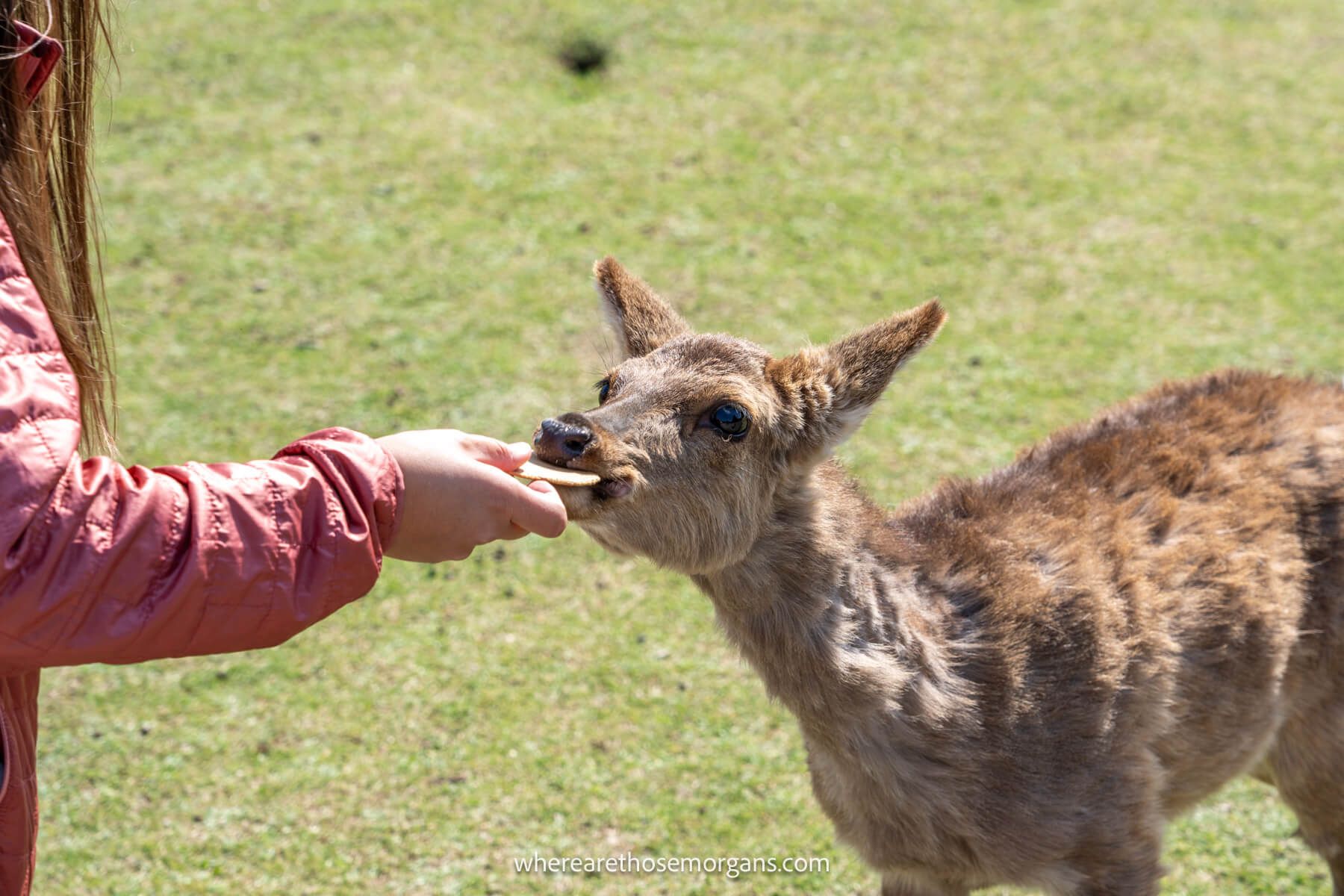
We’ve visited Nara twice and the first time Kristen got bitten by a deer, so there were several steps we took the second time around to avoid getting bitten again. In this guide we’ll show you exactly how to avoid the mistakes we made. Please keep in mind all photos in this guide were taken with a telephoto lens so we wouldn’t crowd the deer. Read more about us.
Note: Our content is reader supported and contains affiliate links. If you make a purchase through one of these links, we may earn a small commission at no extra cost to you and it helps us keep this site running.
Getting Bitten
Okay, let’s start with our fateful visit in 2019:
Our train arrived into Nara from Osaka at 4:00pm. We decided against just taking a day trip because it was a place we were keen to learn about. So we booked a night at Onyado Nono Nara, a beautiful ryokan with natural hot spring baths on site (here’s our fun take on what it’s like to try an onsen in Nara) located just a few minutes walk from the train station. We might have gotten the deer park wrong, but at least we got the accommodation right!
After checking in, we hoofed it up the main street towards the park hoping to see some deer before it got dark. Luckily, we arrived just in time for a gorgeous sunset over Kofuku-ji Sanjunoto, right on the western edges of the park.
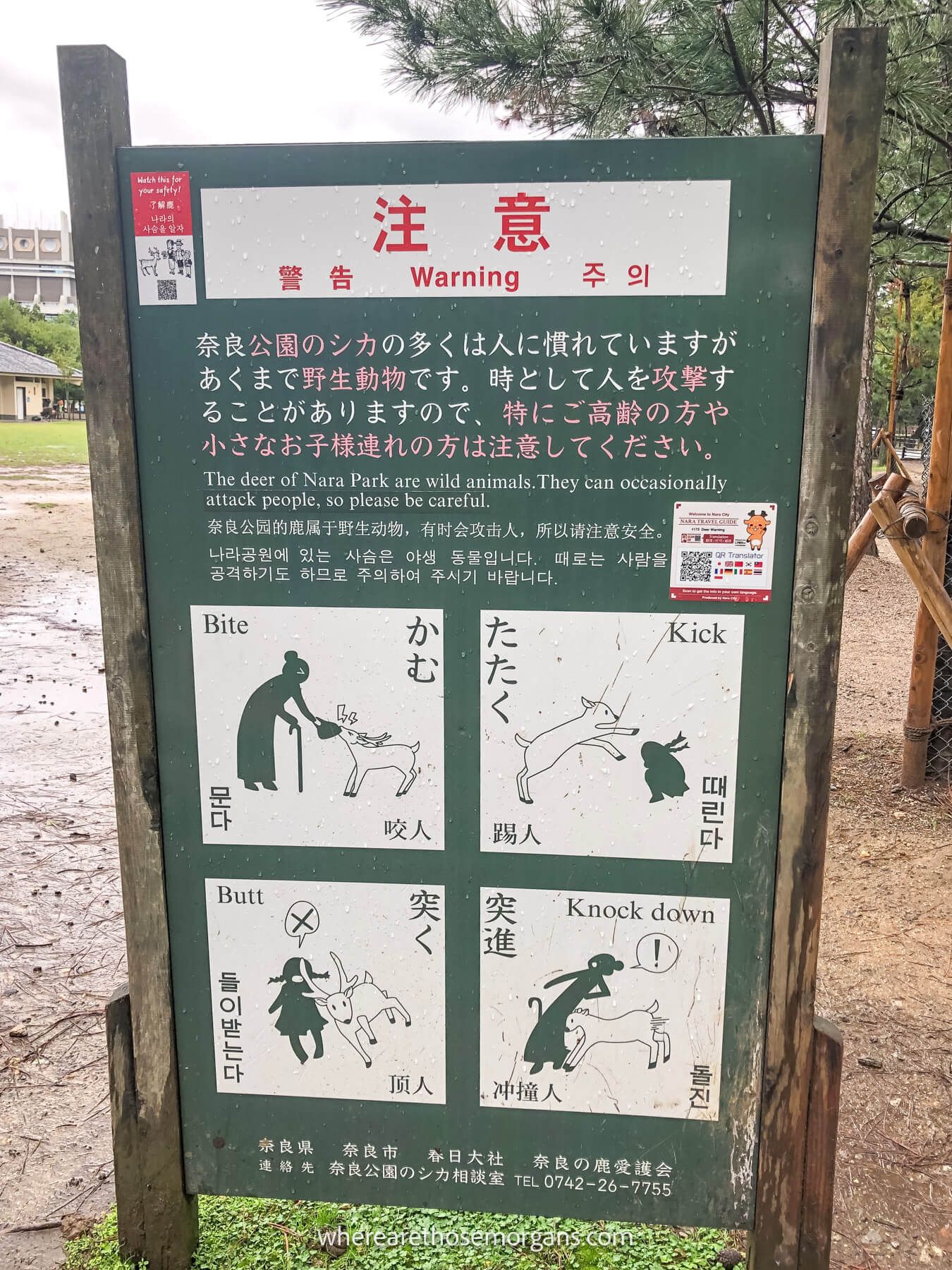
One of the first things we noticed was the warning sign pictured above saying “The deer of Nara Park are wild animals. They can occasionally attack people, so please be careful.” After reading it, we both gave each other nervous smiles trying to figure out how a deer could attack a person.
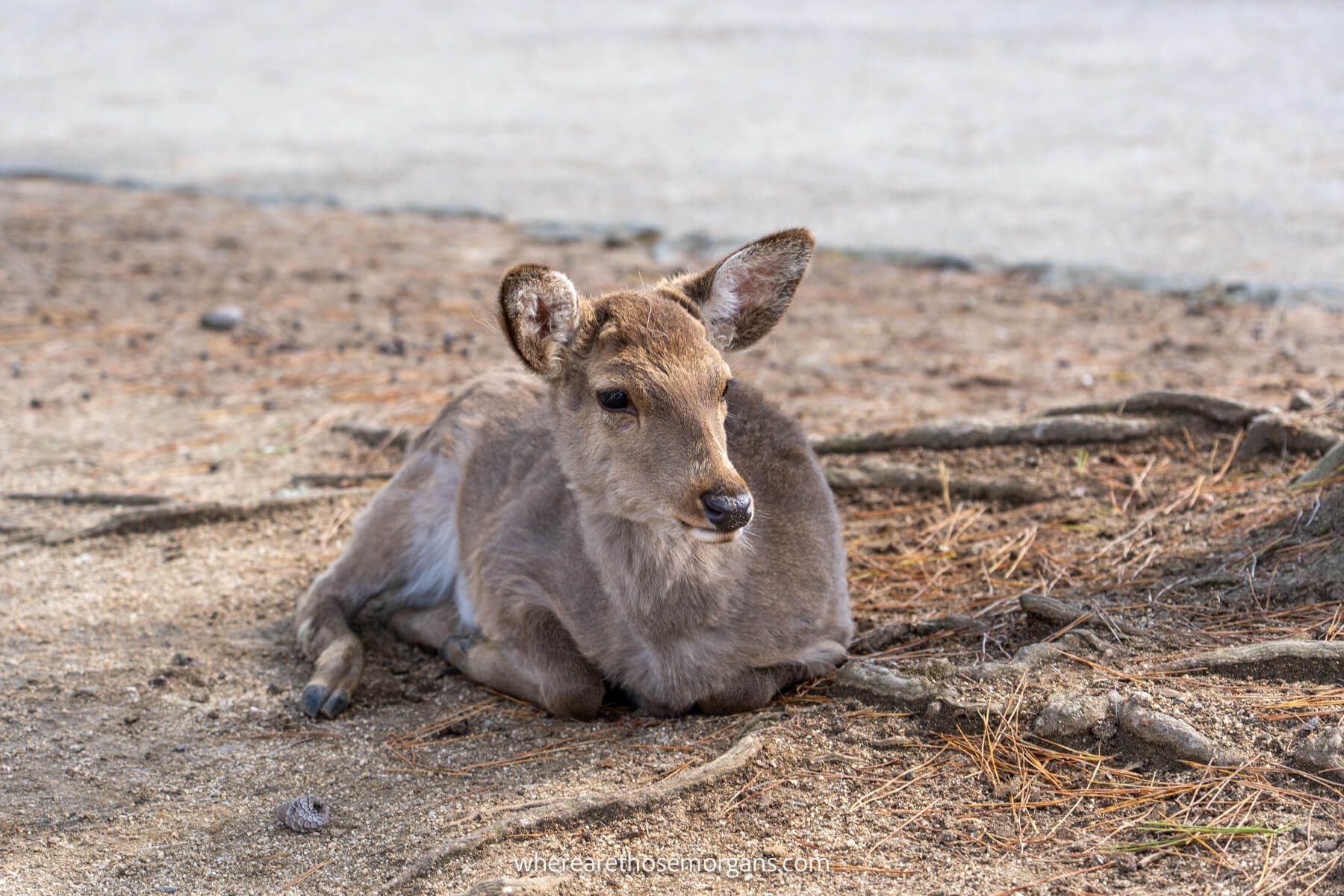
We spotted our first deer eating grass around Sarusawa-ike Pond. But since we only made it to the border of the park before the sun started to set, we decided to come back at it fresh early in the morning for a full feeding frenzy of a day.
The next day, we woke up early and headed back to Nara deer park. Unfortunately, it was forecast to rain the entire day. But even with bad weather our spirits were high because we planned to spend all day inside the park. We decided to beeline it to Tōdai-ji, one of the original buddhist temples built in the mid-700’s and housing one of Japan’s largest bronze statues.
Turns out everyone else had the exact same idea. And we quickly learned when there are hoards of people, there are hoards of deer. Why? Because visitors feed the deer crackers. We saw tons of small kiosks selling deer crackers or “shika senbei” in packs of 10 for ¥150 (now ¥200).
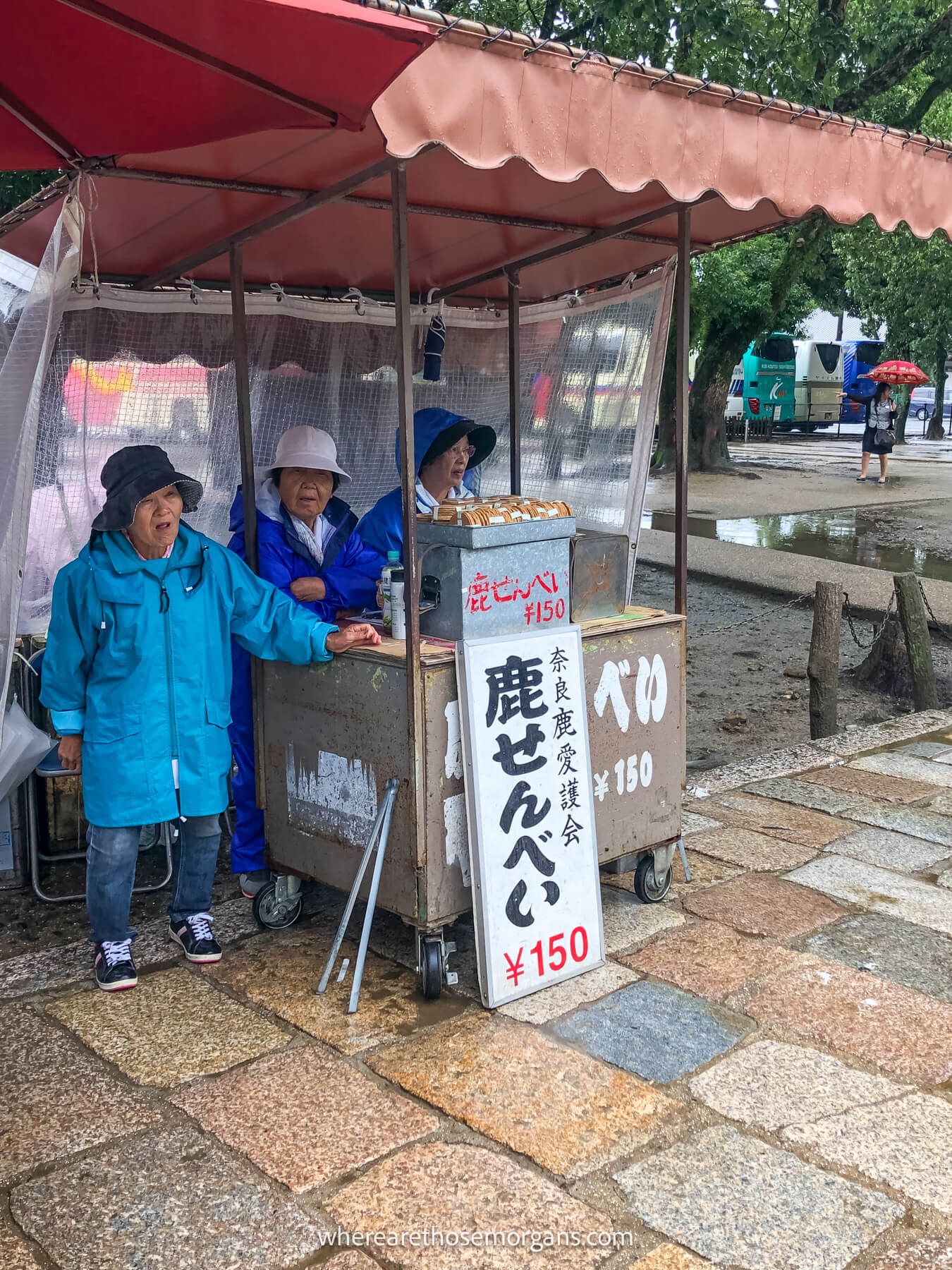
Then out of nowhere, it suddenly felt like were 3 million deer staring at us. So Kristen rushed to the first stand in sight to buy a pack of 10 round crackers. It was a quick exchange and the seller gestured us away emphatically as the deer started crowding the stall. They’re smart enough to know where the food is!
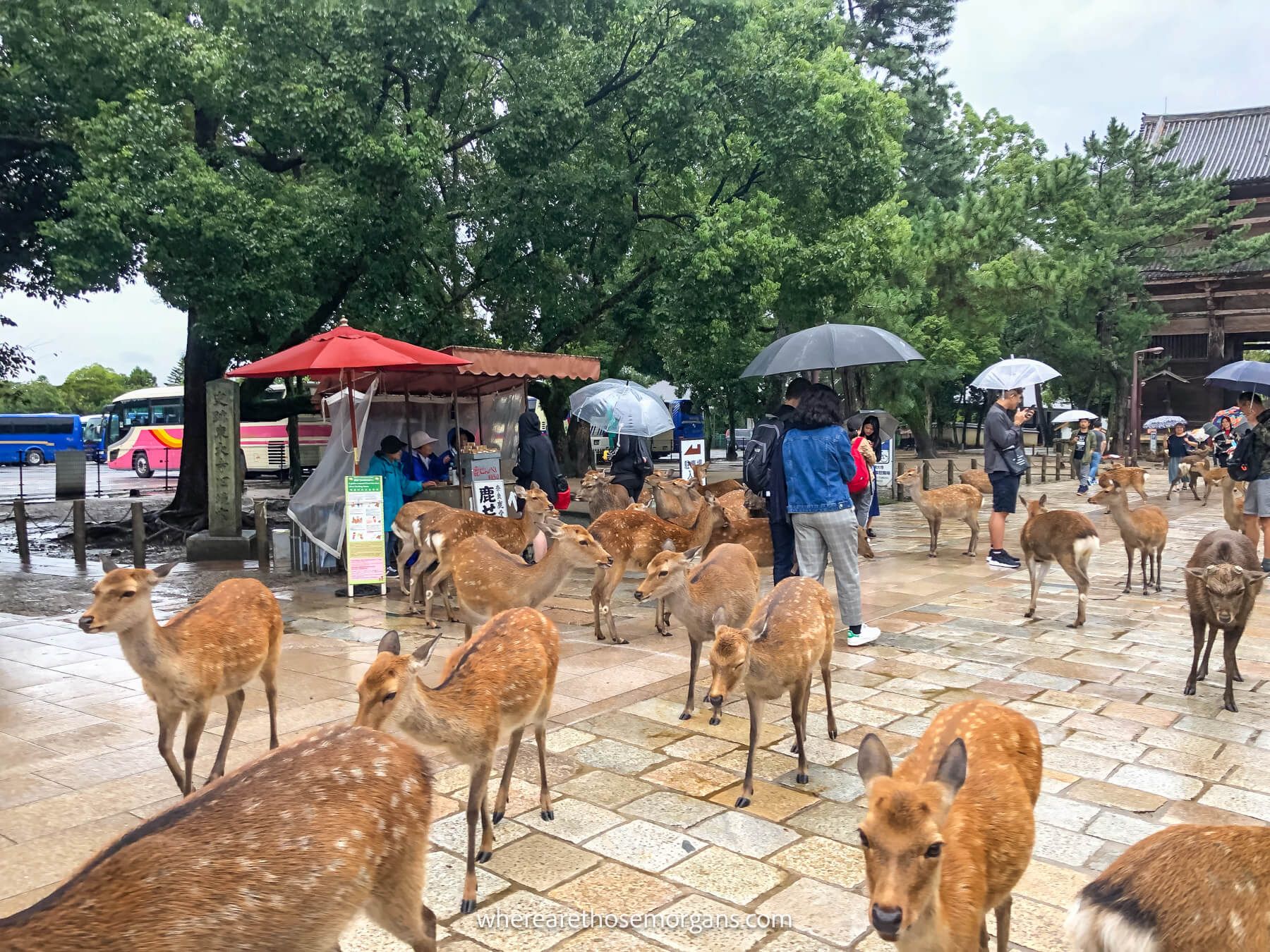
And this is where the problems began. Three big hairy males in a herd of about 15 others turned on Kristen. They approached and boxed her in against the stall. It took her a moment to regain her composure to work out an escape route, and she tried to walk through them. But at that very second, a cheeky little fella popped up from the side and munched on Kristen’s hip.
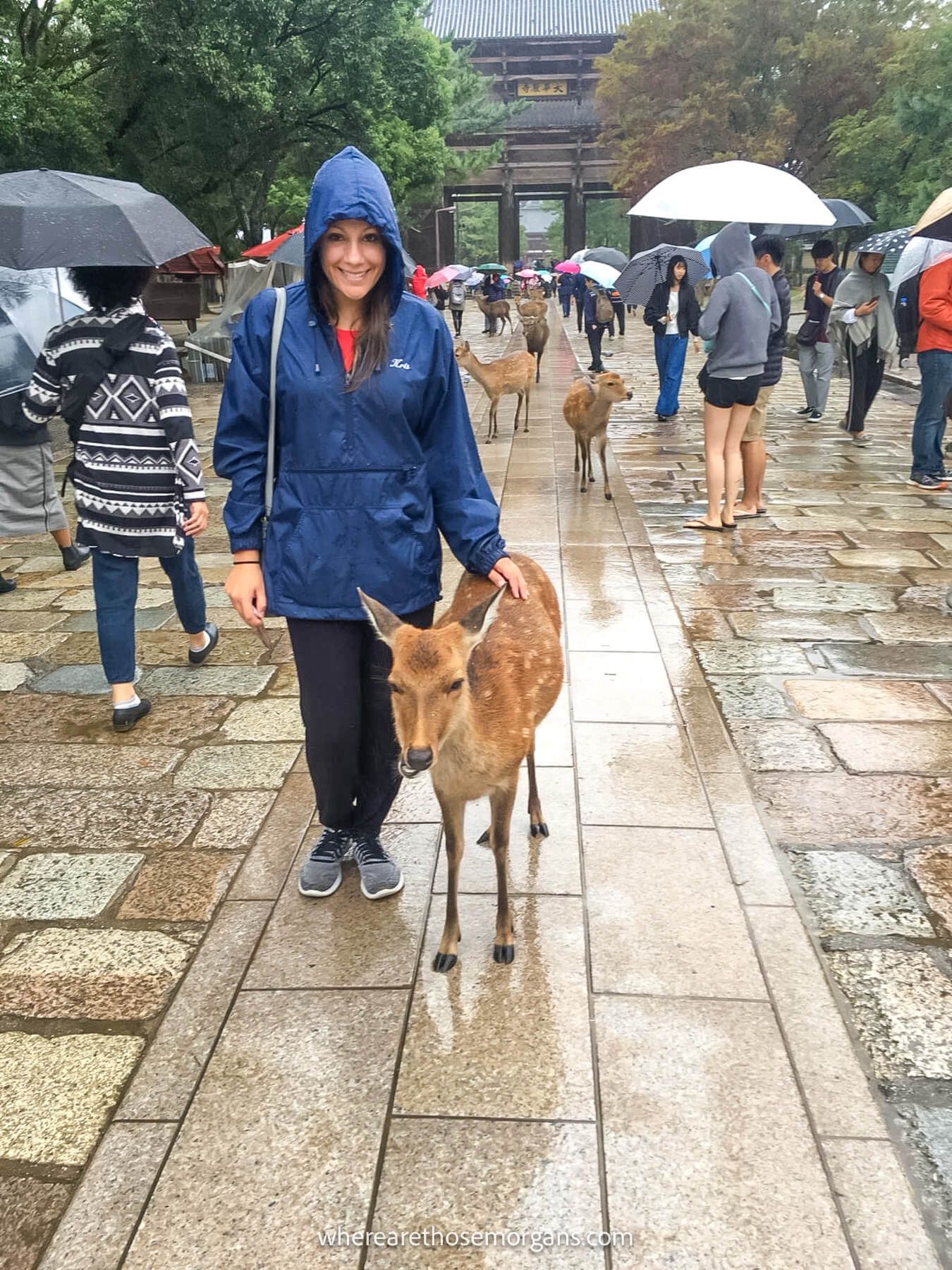
She froze solid and was suddenly terrified with shock. In her fragile and panic-stricken state, Kristen was no longer so enthusiastic about feeding the cute-looking sika deer of Nara. Brandishing a brightly flushed face and leaving her dignity at the door, she managed to find a gap and charged her way through like a blocker to the end zone.
A few moments later, Kristen recovered from the shock, then we then continued to visit the amazing temples and shrines of Nara. And later that day, adopting a far more cautious approach, we fed a few more deer but only once we’d identified solo females.
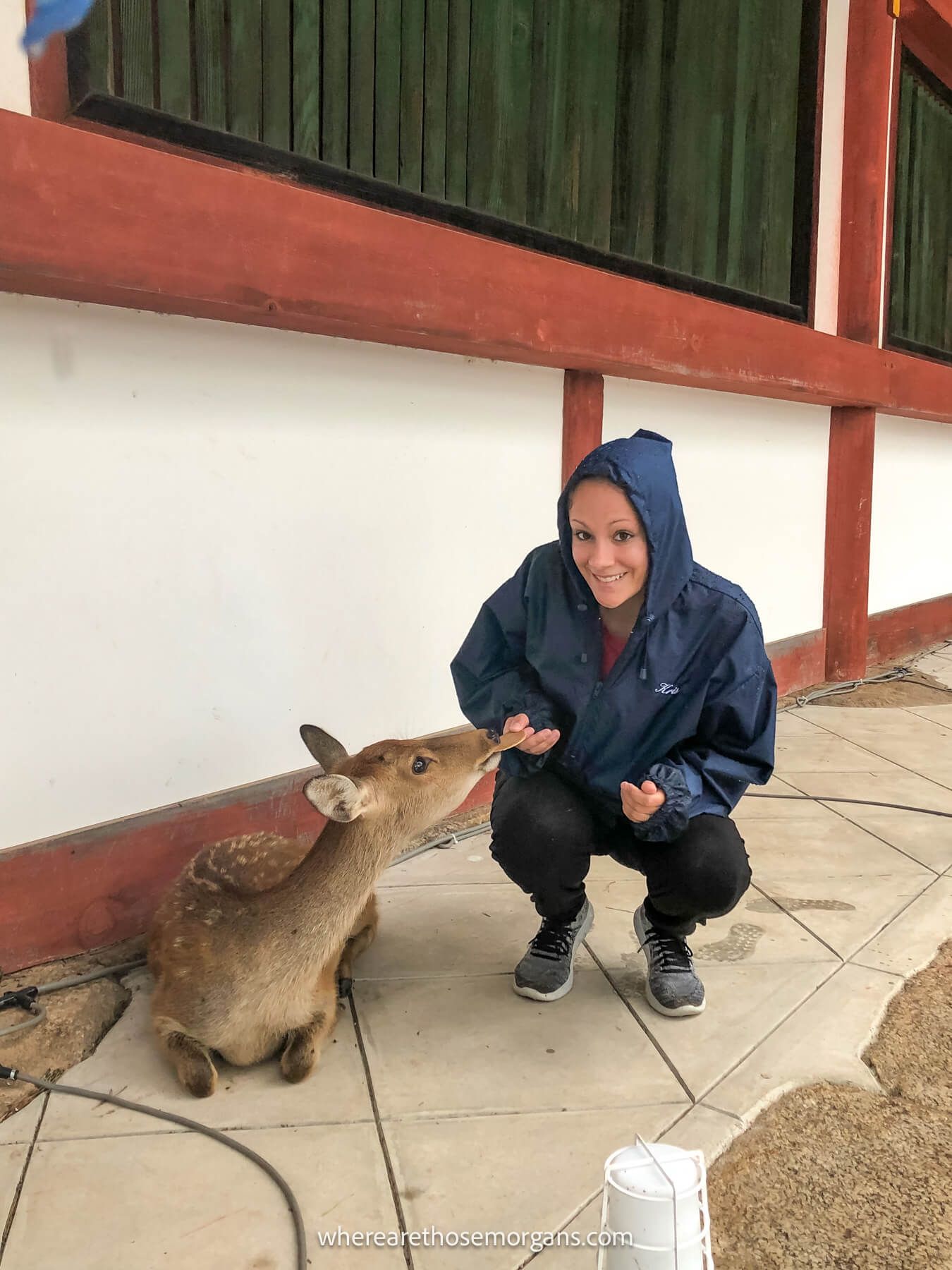
We’re not writing this guide to scare you, but to prepare you for what can happen if you’re not careful. It’s all how you approach the deer, and our second visit was a totally different experience.
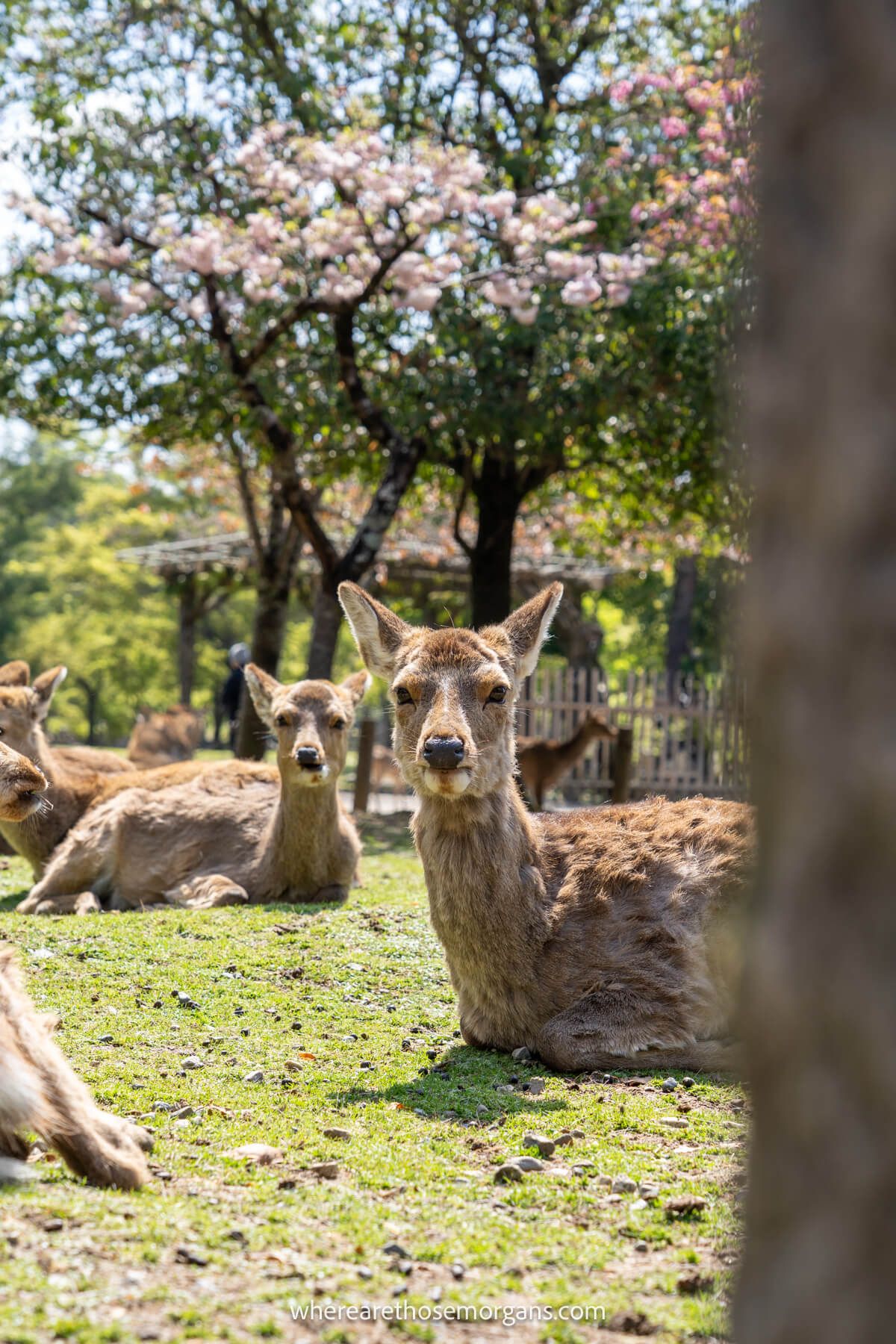
How To Properly Feed The Deer In Nara
After our first trip, we knew we liked Nara so we planned to spend another full day in town when we returned to Japan. And this time around, we wanted to explore more than just the deer park. We also had a completely different mindset when it came to the deer and we did a lot of research before visiting to avoid another bite.
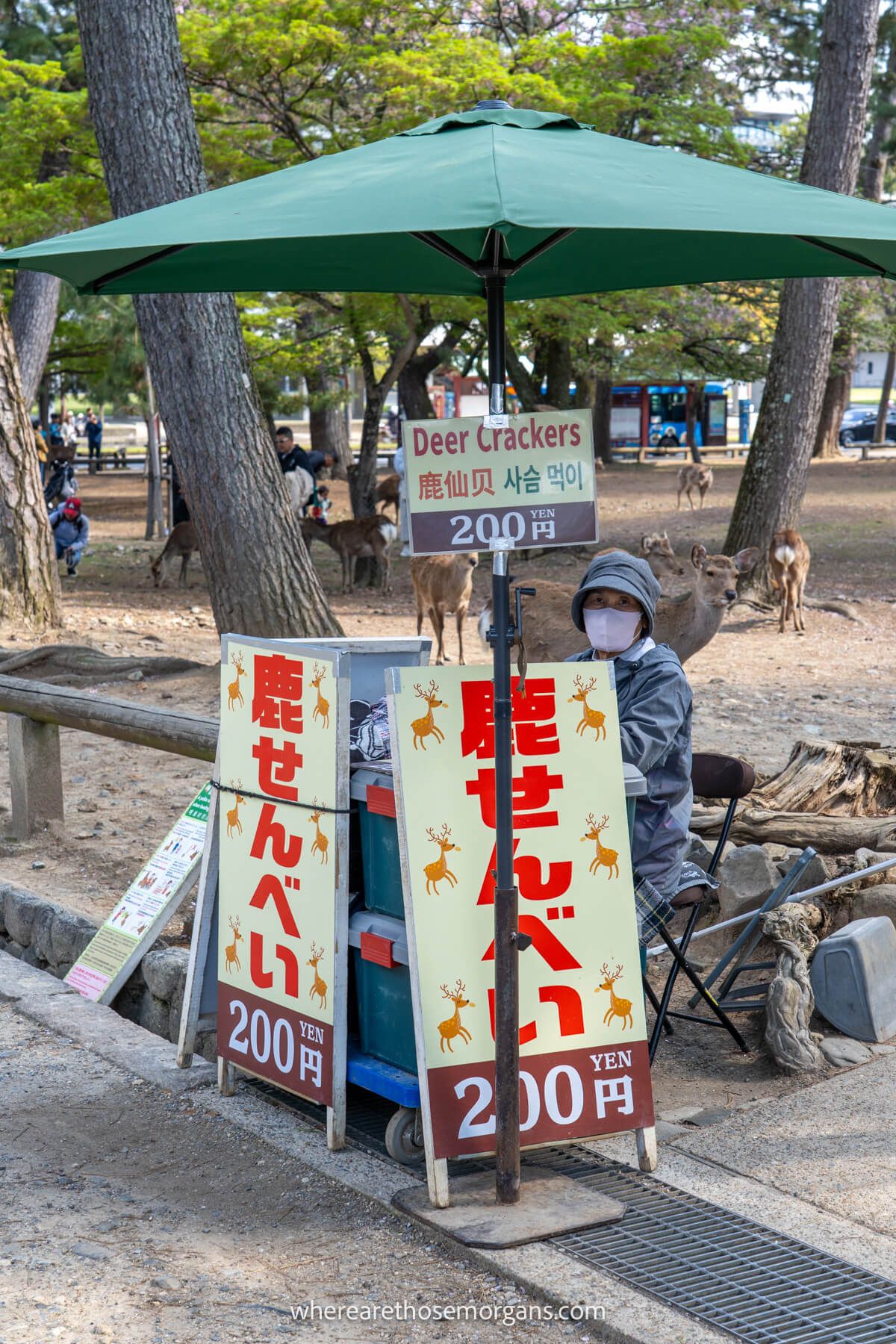
Some of the deer can be aggressive, but the proper way to feed them is to have them bow before taking a cracker from you, after which they typically won’t be aggressive. The best way to ask for a bow is hold a cracker overhead and the deer should bow its head one time. If you want to ask for a second bow, put the cracker behind your back.
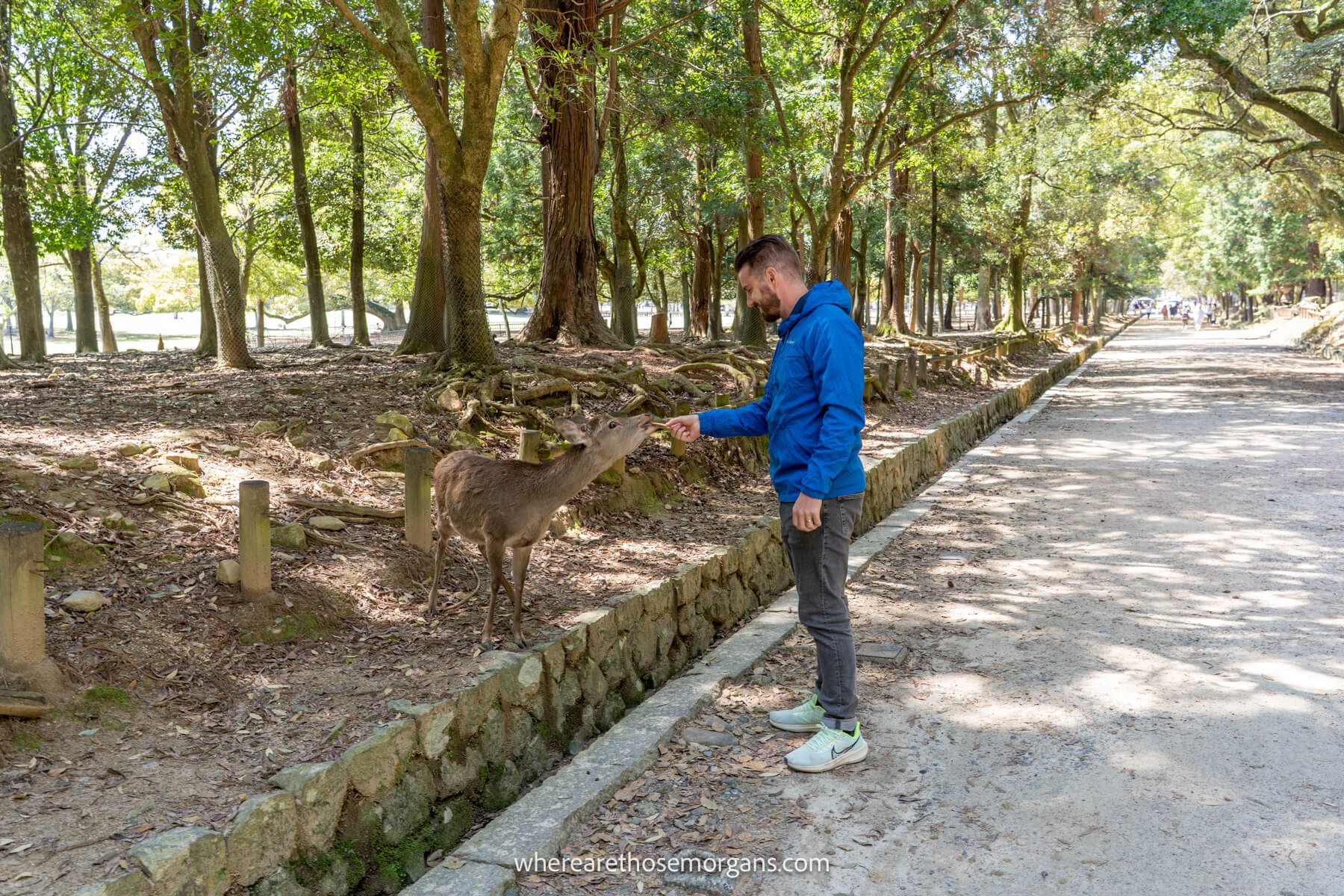
After speaking with some of the locals when buying a pack of crackers, we learned getting a deer to bow three times is what you should aim to do. For the final bow, hold the cracker over your head just like the first time and after the deer bows, reward them with a cracker.
So we set out to feed the deer again, but this time we opted to get away from the most crowded areas around the main attractions. We looked for small groups or solo deer, and it wasn’t long until we came across a solitary older deer. As we approached, we made some noise so he knew we were coming, and he seemed interested so Kristen went for it. She held her cracker overhead and the deer bowed. Wow, what a difference!
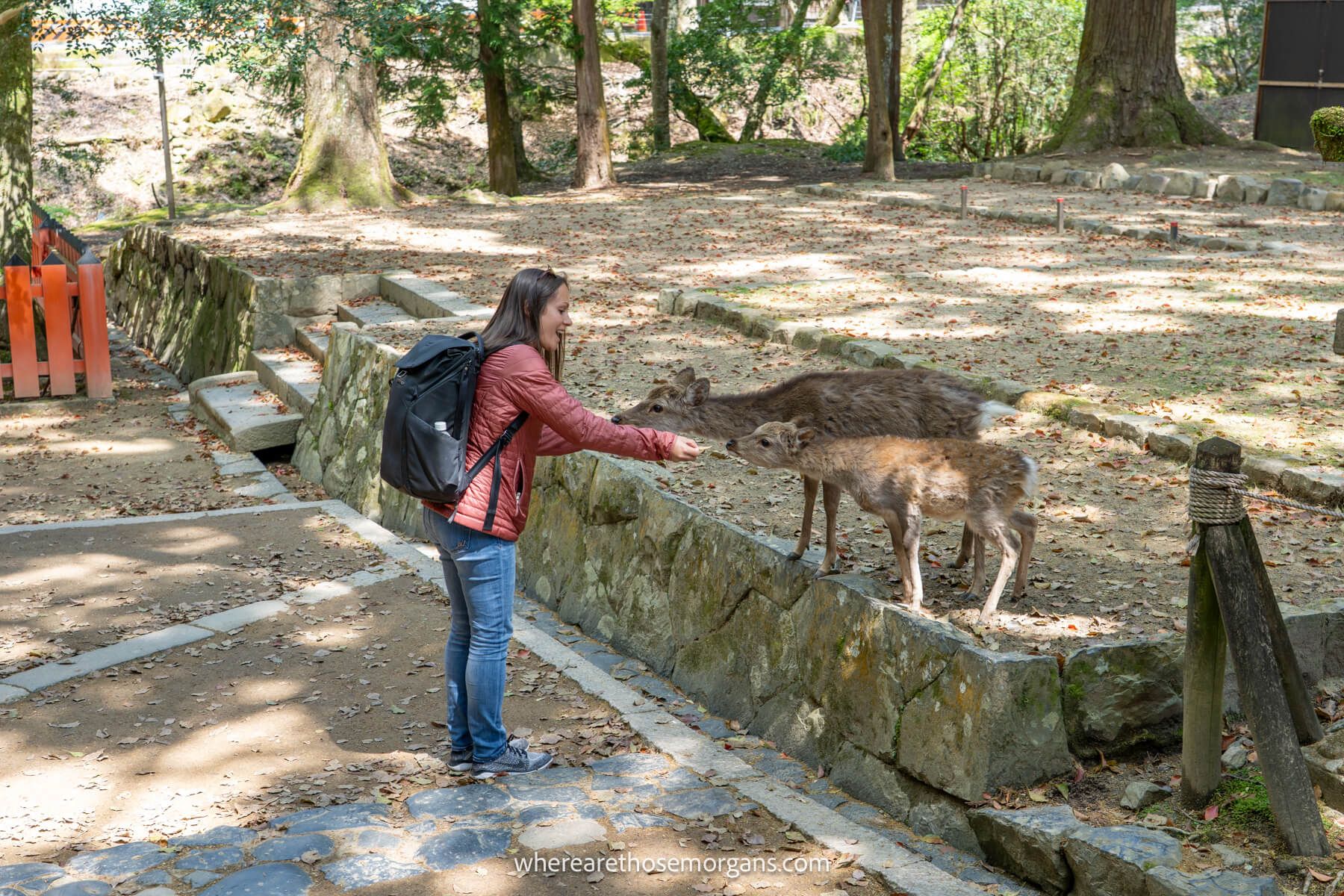
After two more bows, the deer patiently waited for his cracker. Let’s just say it was a relief for both of us that we didn’t have to worry about getting bitten again. The trick is to look for the older deer because they are more well-mannered. If you try to feed the smaller ones surrounded by males like Kristen did the first time, they tend to get aggressive and try to grab the crackers out of pockets or hands.
Another game changer for dealing with the deer is to hold out your hand to show you no longer have crackers to feed them. When we ran into a small group of young deer, this worked as they backed away realizing we had no crackers to give. We then spent a few more hours casually strolling through Nara’s deer park with no incidents.
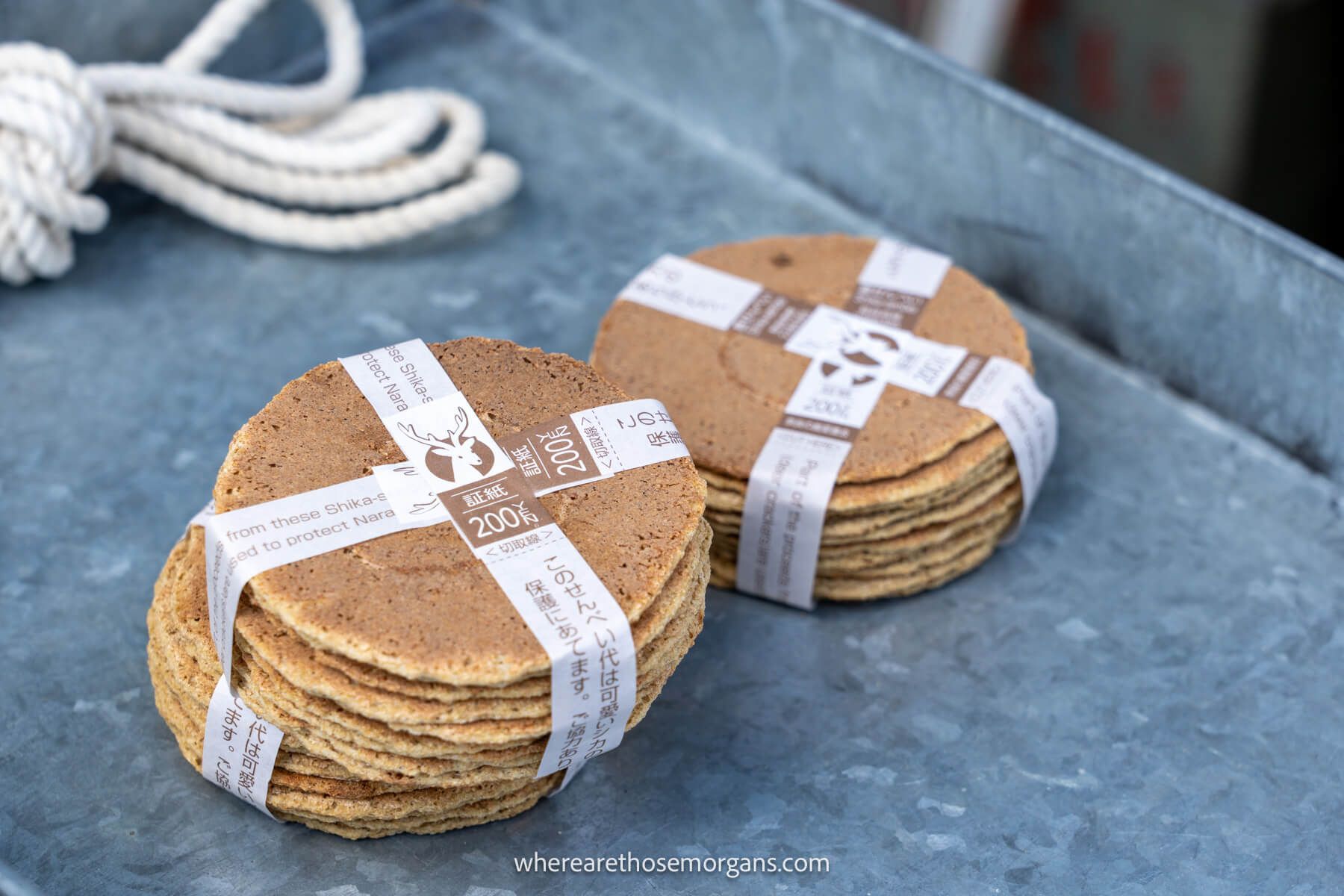
The crackers are sold in packs of ten and while you can feed one to each deer, we broke the crackers in pieces to make our packs last as long as possible. In the end we went through a whole pack in the morning and another in the afternoon.
Our Top Tips
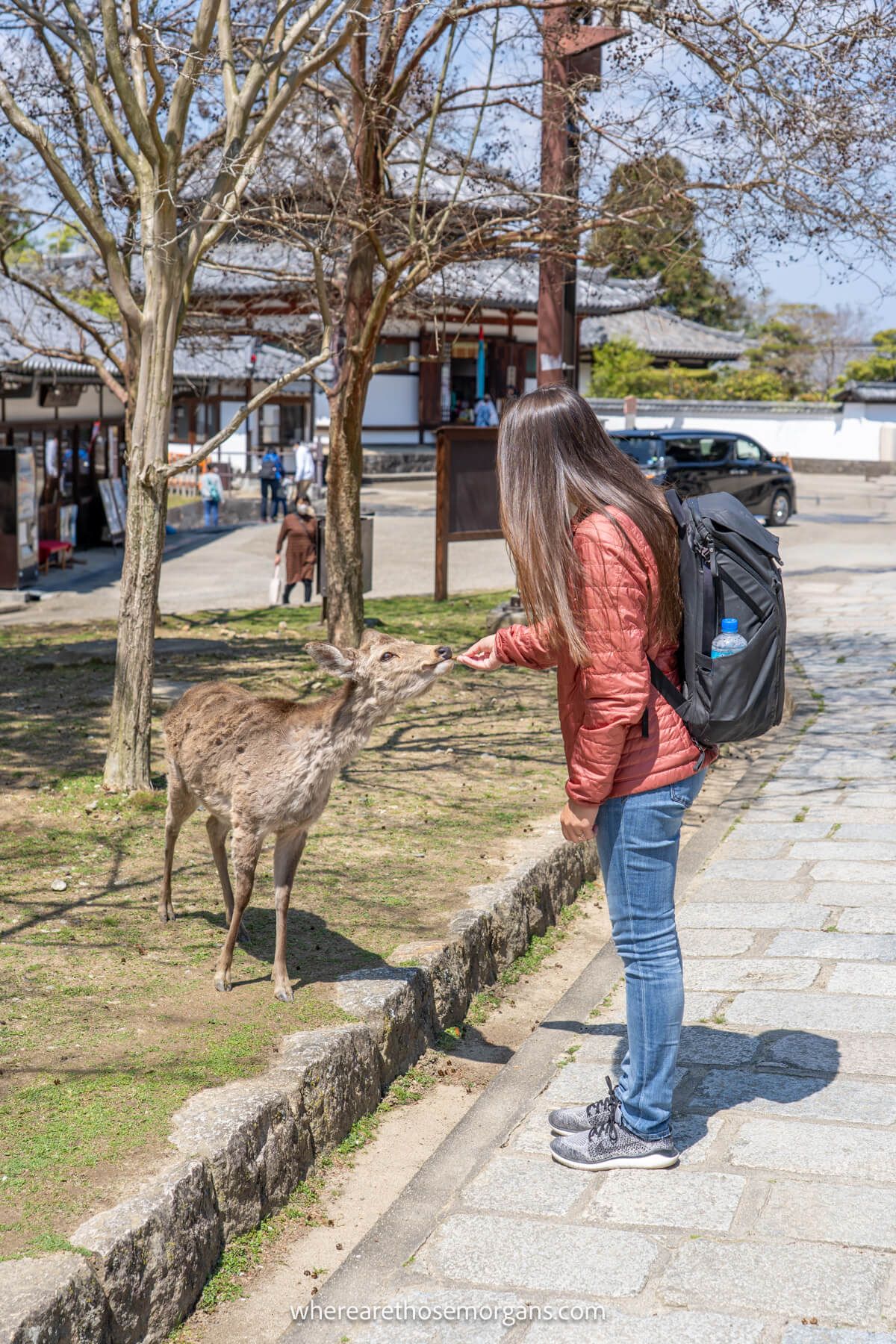
Even as a huge animal lover, Kristen was nervous to re-visit the deer park in Nara after our first trip. Remember, even if the deer appear calm, they are still wild and undomesticated animals. When researching, we found this article about the increase in visitors being injured by the deer, which didn’t surprise us.
Here are a few tips to help you avoid a bite:
Interactions: Observe the interactions between people and deer before you first approach. If you’re headed towards a group of tourists surrounded by hungry young deer, avoid it and head in the other direction. This is what got us in trouble the first time.
Cracker stands: Look for a cracker stand not surrounded by deer. These animals are crafty little devils and know where to get the food. Once you have the crackers in hand, they will know it and come for them.
Be selective: Ideally, you’ll start by feeding does or older deer to learn how to do it. Our experience showed us these deer were the most well-behaved in the park. They will bow and aren’t as aggressive as they young ones or larger males. Put your hands up directly after you feed them so they know you have no more food.
Selfies: Avoid trying to take a selfie with the deer. We saw a lot of bad behavior when it came to tourists with cellphones, like holding the crackers just out of reach so they could get a photo of a deer trying to get it. This is a no no. If you tease the deer, they will get aggressive. Not to mention it’s just cruel.
Food: Don’t feed the deer anything else but crackers. They contain a mixture of wheat flour and rice bran with no additional additives so they are safe for the deer to eat.
More From Nara
Want more Japan content? Head over to our Japan Travel Guides to explore the very best of Tokyo and beyond.
We hope our guide helps you visit Nara’s famous deer park without being bitten!
Please let us know if you have any questions in the comments below.
Happy Travels,
Mark and Kristen
Enjoy this guide? Pin it for your visit!
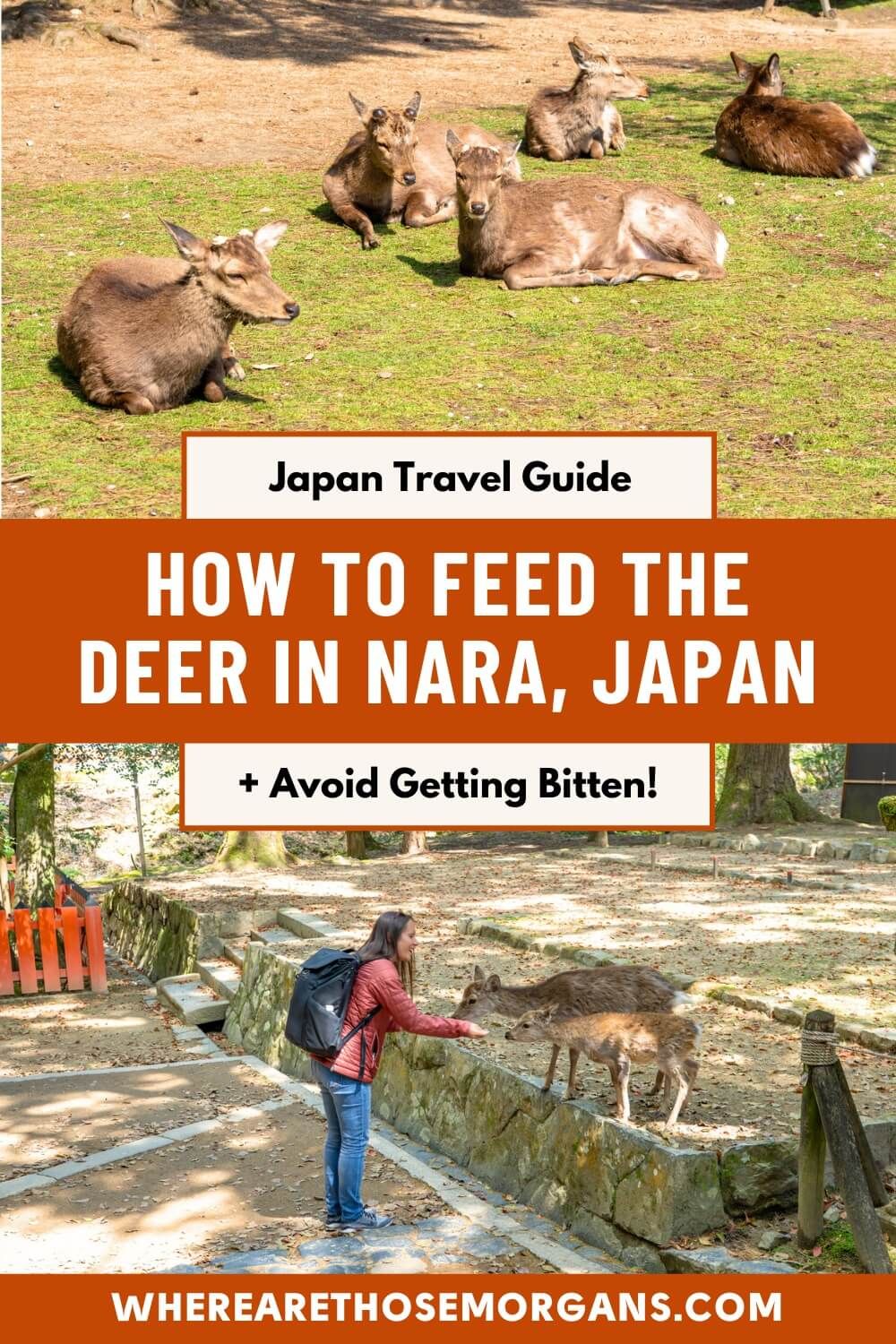
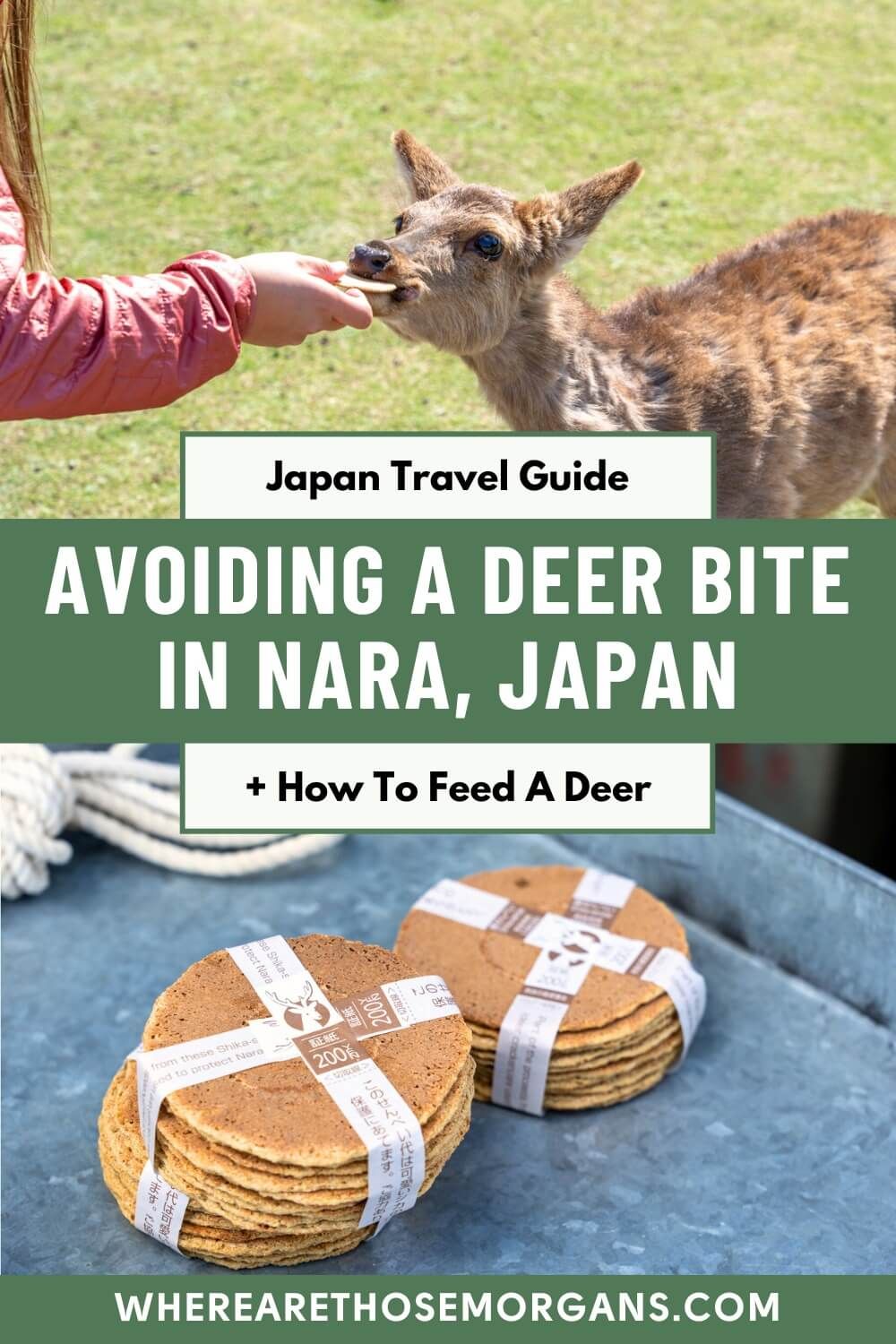
All Rights Reserved © Where Are Those Morgans, LLC. Republishing this article and/or any of its contents (text, photography, maps, graphics, etc.) in whole or in part is strictly prohibited.


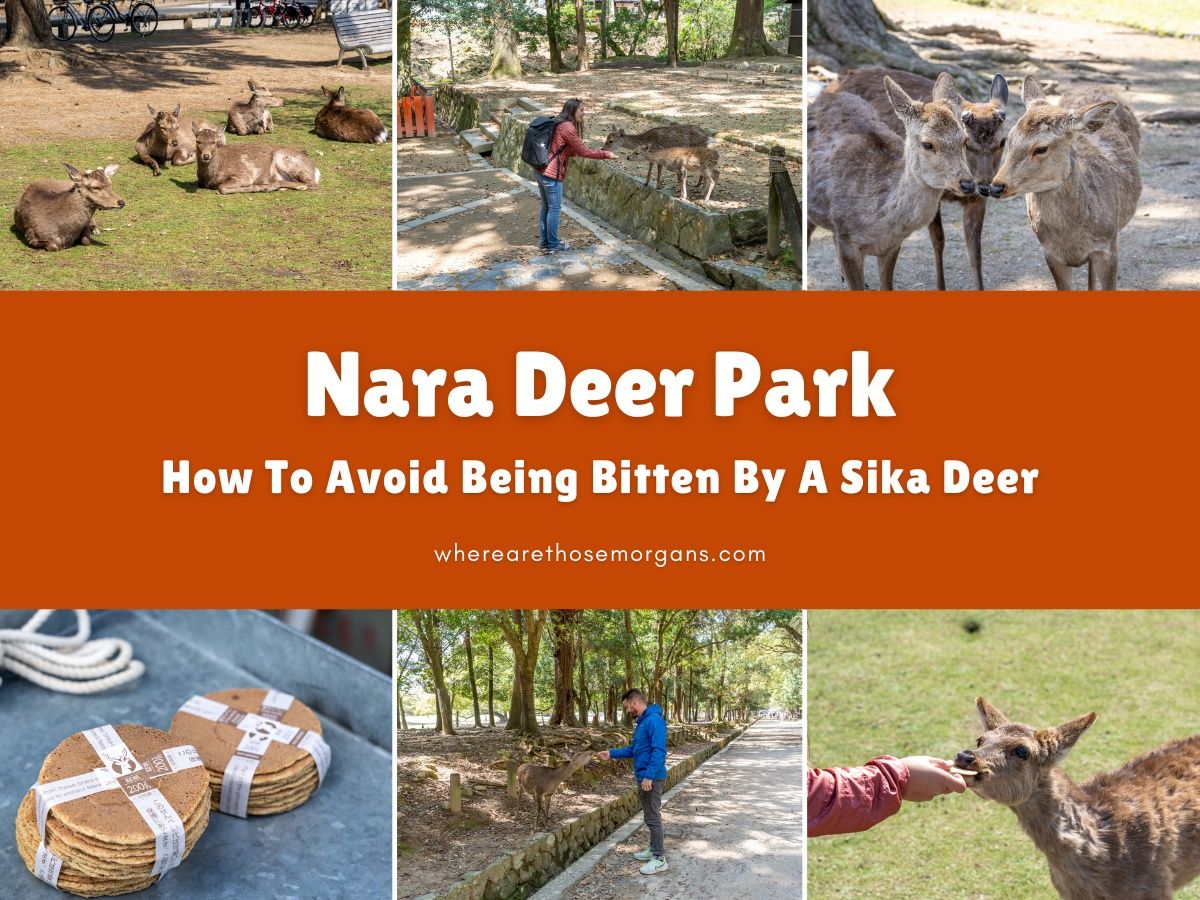
Do you need a rabie shot if you get bit by a deer ?
Hi Teresa, Japan is essentially a rabies free country because there hasn’t been a case detected since the 1950’s. However, the virus can spread through the saliva of infected animals through bites and scratches. If the bite doesn’t break the skin or come into contact with a mucous membrane, you should be okay (Kristen’s bite happened over clothing). Rabies is also rare in deer, but if you have any concerns, you should have it checked by a doctor asap.